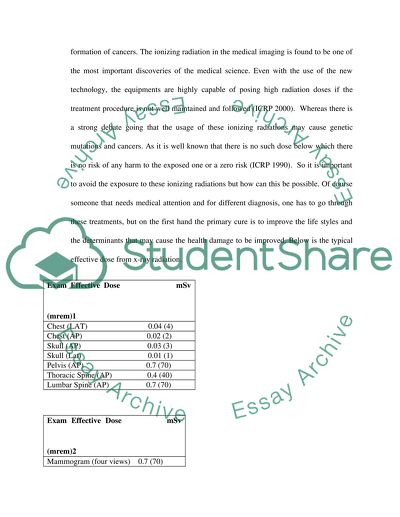Cite this document
(“The risks associated with ionising radiation in medical imaging Assignment”, n.d.)
Retrieved from https://studentshare.org/family-consumer-science/1421716-the-risks-associated-with-ionising-radiation-in
Retrieved from https://studentshare.org/family-consumer-science/1421716-the-risks-associated-with-ionising-radiation-in
(The Risks Associated With Ionising Radiation in Medical Imaging Assignment)
https://studentshare.org/family-consumer-science/1421716-the-risks-associated-with-ionising-radiation-in.
https://studentshare.org/family-consumer-science/1421716-the-risks-associated-with-ionising-radiation-in.
“The Risks Associated With Ionising Radiation in Medical Imaging Assignment”, n.d. https://studentshare.org/family-consumer-science/1421716-the-risks-associated-with-ionising-radiation-in.


